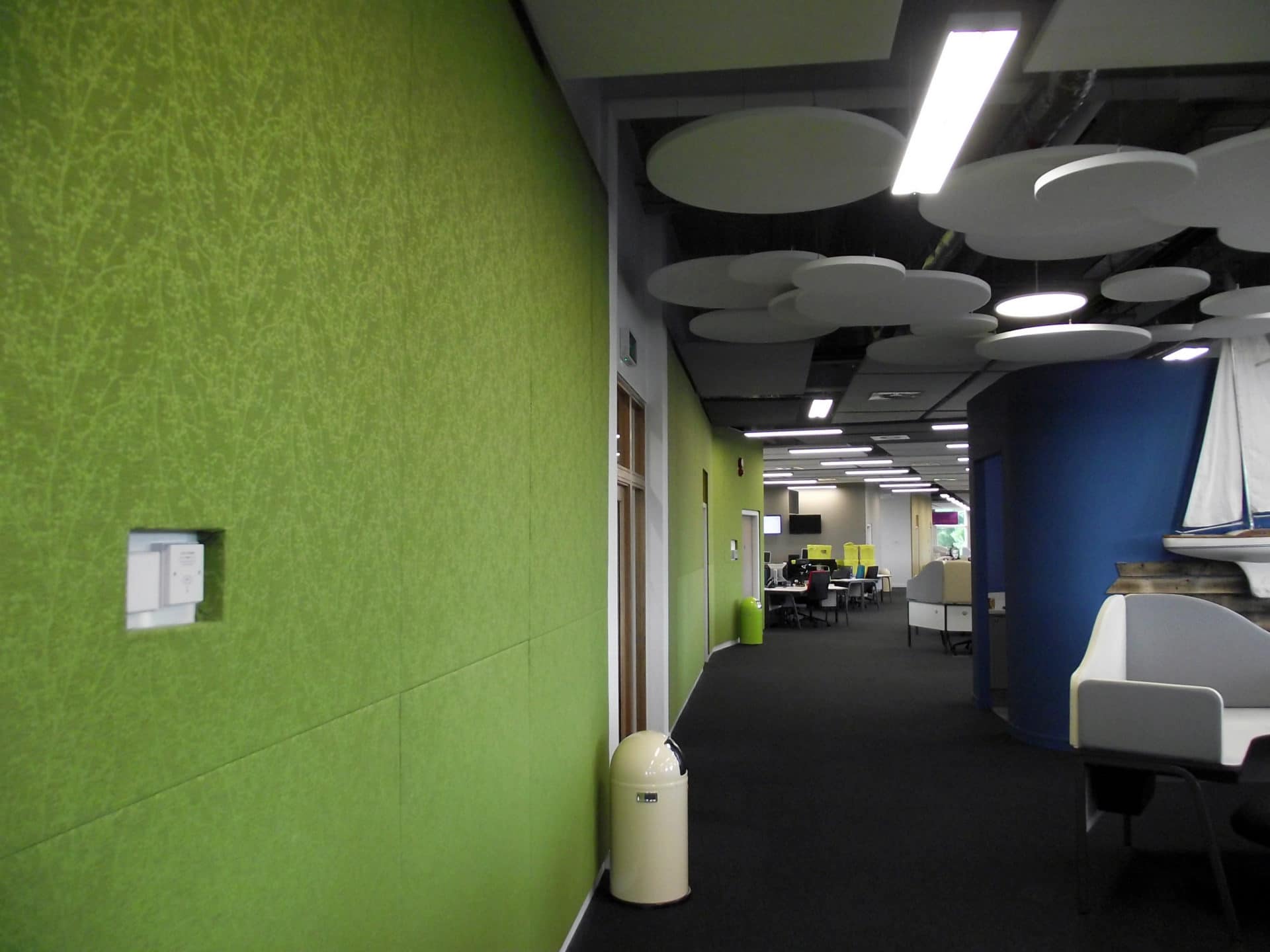Acoustic performance has become an influencing factor in the design and construction of the built environment – say it quietly, but that influence looks set to increase, as Paul Thompson reports.
The science around the acoustic performance of the built environment has improved markedly over the past few years. The impact – both positive and negative – that sound can have on our everyday lives is now more widely understood and our perception of decent acoustic performance has sharpened.
A quick look at how much the average open plan office has changed underlines that. From standard partitioning systems and a nod at noise-quenching barriers to sound-absorbing meeting booths and high-spec conference rooms, the offices that fit-out specialists are being asked to create are a world away from those that were being built just a decade ago.
John Blackwell is the managing director of Quora Consulting, a management consultancy that specialises in researching and quantifying the workplace and the effect it can have on the workforce for blue chip companies.
“We have studied acoustics within the workplace and have been able to build up data that allows us to pinpoint exactly who will be affected by any change in acoustic behaviour and by how much,” he said. That information can be used to create the optimum office environment – which can lead to a remarkable hike in employee performance, according to Mr Blackwell.
“Studies show that improving the office environment – of which acoustics plays an important part – can lead to employee efficiency improvements of as much as 15 per cent. When you start putting figures like that together, you realise that the way we fit out our offices can have enormous commercial benefits to a business,” he added.
Those benefits can be tailored to such an extent by acoustic engineers and architects that they can pinpoint specific performance requirements within the same room, giving true flexibility across the workplace.
“We can put some hard numbers on noise amplitude and direction. Then it becomes a commercial discussion on the design and provision of materials and surfaces that will help deliver that performance. We can certainly reshape the working environment to make it far more responsive,” Mr Blackwell said.
Changing perceptions
Certainly, people’s perception of noise reverberation and acoustics has changed. For many years, in both the residential and commercial worlds, the trend has been to design out sound-absorption materials. Curtains have been replaced by blinds; carpets by tiled or wooden flooring. Despite this, owners and occupiers still want a room or building with perfect acoustics.
“Awareness of the importance of good acoustics and sound insulation has definitely increased,” says Rob Cridford, technical manager at Etex Building Performance. “Office developers, designers and clients are a sophisticated bunch. They know what they want in terms of overall design and the challenge is to make sure the solution is as flexible as possible.”
Hitting those numbers is down to both the manufacturers of noise-suppression and acoustic performance products and the skilled installers themselves. The capability is certainly there and market forces are constantly pushing the manufacturers to develop better performing and more efficient products. The key is making sure that installers understand the systems correctly.
“There is a vast array of products out there that can be used in a variety of projects,” said Paul Absolon, technical director at soundproofing and acoustic insulation specialist CMS Danskin Acoustics, part of SIG Performance Technology.
“We are heavily involved in providing solutions for the residential, commercial, healthcare and education sectors. We will offer a bespoke solution and advice on products that can help meet the requirements, but it is vital that those materials and products are installed correctly. If not, then the client will not get the performance required and the project could fail to meet expectations.”
Making those products easier to install for contractors as well as bringing benefit to the user is important. For contractors and project managers, simplicity is everything.
Buckinghamshire-based TGM Contractors is working on a new cinema development which demands perfect acoustic performance within the auditorium as well as zero sound migration from it. The company’s technical director, Mark Buckley, commented: “When we tendered, we said we thought the specification needed tightening. Fortunately, the client appreciated our honesty and took our advice to help improve performance.
“We need systems that are simple to install; but it is equally important that the installation is checked at every stage. Making sure we have the correct checking systems in place is vital,” Mr Buckley added.
Tom McLoughlin, CEO at MACS Plasterboard Systems, echoes those thoughts. “In residential applications, it is generally sound insulation and resistance to the passage of sound that we are most interested in. Simplicity in installation and keeping on top of the testing is really important,” he said.
Developing acoustic solutions
Manufacturers are taking on that simplicity challenge, developing products that will help meet current Building Regulations and go beyond them. CMS Danskin Acoustics has a host of anti-vibration and acoustic performance solutions that can counter noise and reverberation problems across all sectors, while Etex Building Performance has its Resilient Acoustic Stud (RAS) partition system that it claims is quicker to install and offers a thinner profile that helps developers to maximise their floorplate without any reduction in performance.
There are other developments too. The use of biophilic barriers – plants and green walls in offices to absorb, refract and diffuse noise and reverberation – are cropping up across the latest office developments, with the added bonus that plants are proven to help reduce employee stress levels.
Thankfully, the myriad of products available to the marketplace can, presently, sate the demand for ever more finely tuned acoustic environments, particularly in the office, education and commercial world.
With acousticians now able to direct and nullify sound with pinpoint accuracy, and a proven correlation between acoustic performance and employee comfort, that demand is only likely to increase.



